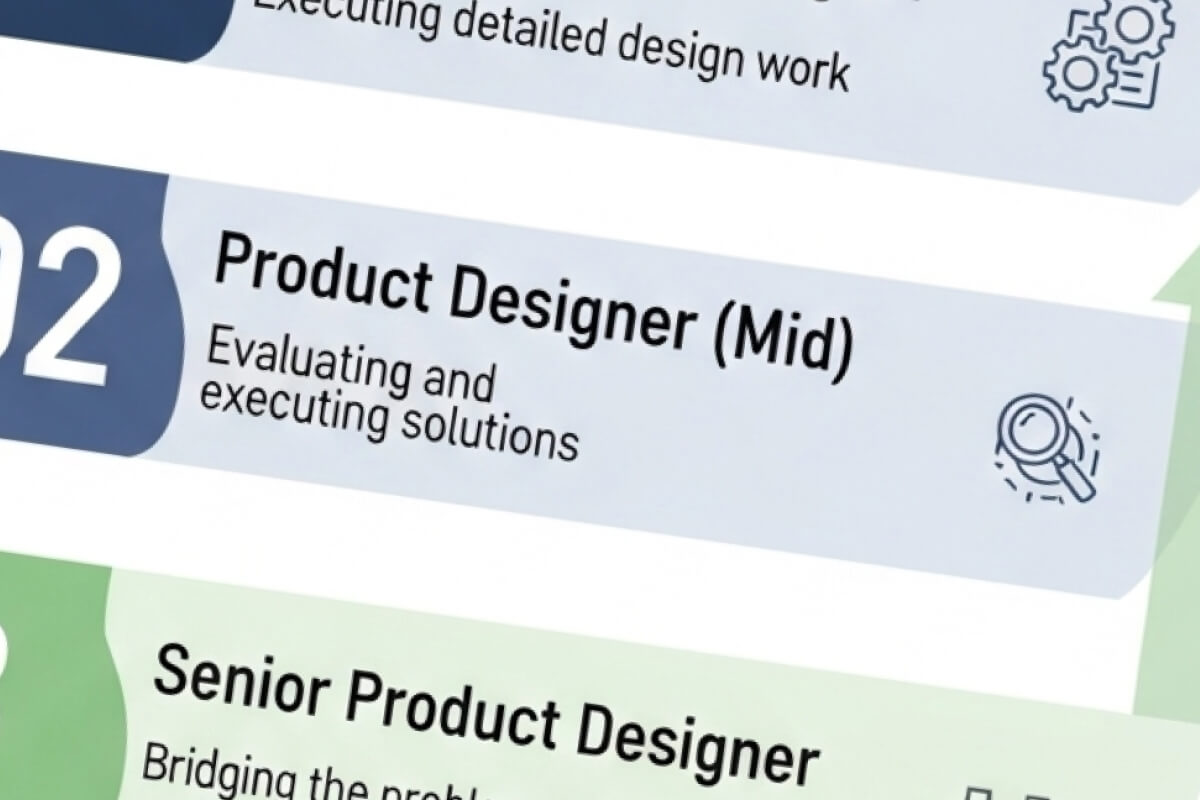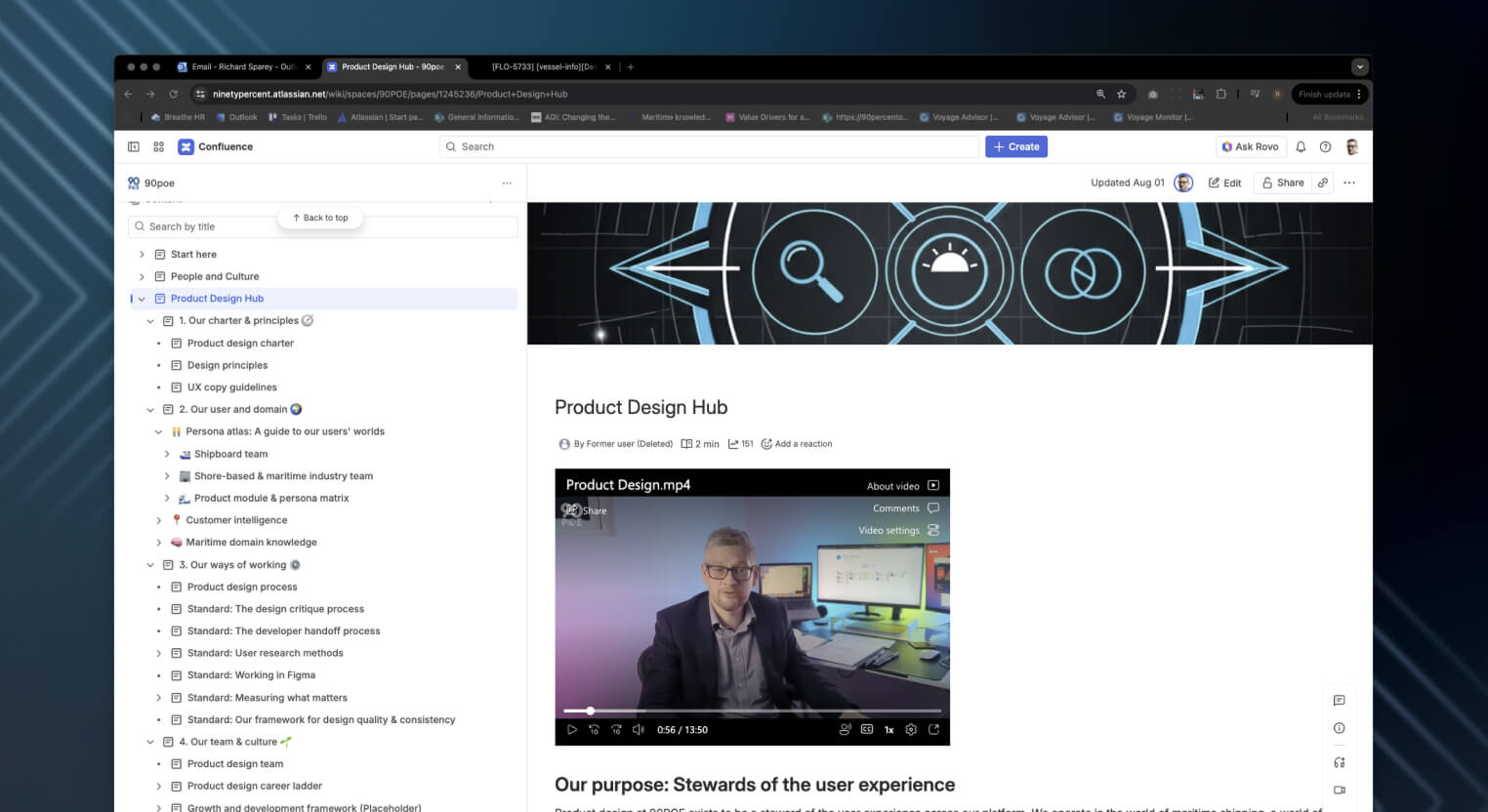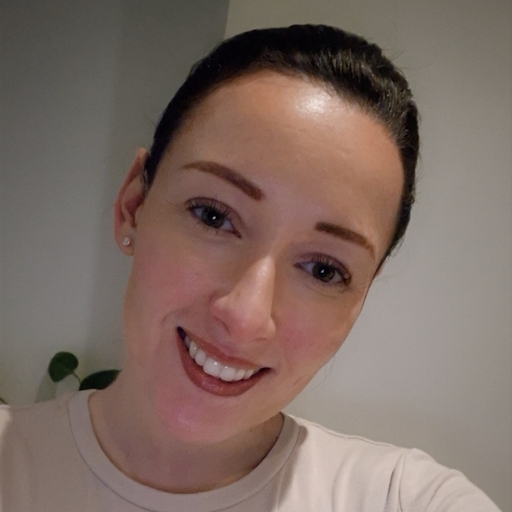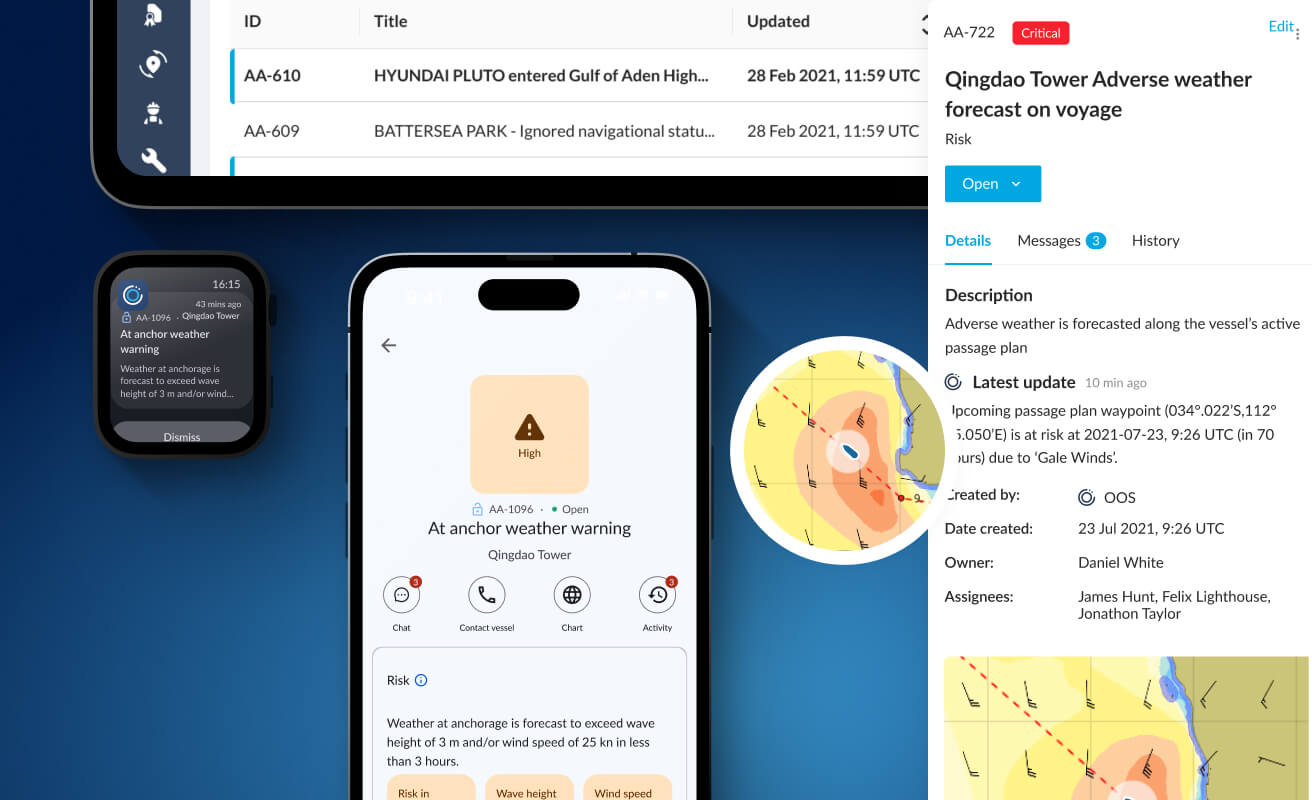Building a design function from the ground up at 90POE
#
At a glance
The challenge
I was hired to replace the exiting CDO and build a permanent design function from the ground up. I faced a fragmented, contractor-led model with no C-level leadership, deep design silos, organisational ambiguity, a chaotic tech stack, and no clear career progression to attract or retain talent.
My Role
Lead Designer/Head of Design (Player-Coach), responsible for designing the entire function. This involved all hiring, creating the team's Design Charter and Career Ladder, building the design system, and providing all day-to-day leadership and mentorship.
The process
I established the new function's core pillars: 1) Co-creating a Design Charter to forge a unified team identity. 2) Building a Product Design Career Ladder from scratch to provide clear growth paths. 3) Driving the pragmatic, long-term adoption of a unified Figma Design System and a central Confluence documentation hub.
The impact
Transformed a scattered group of siloed designers into a single, cohesive, and resilient in-house function. The new systems and charter eliminated ambiguity, dismantled silos, and boosted productivity. The career ladder was instrumental in attracting, mentoring, and retaining talent, providing a clear path from Junior to Lead.
|
Introduction
When I was hired to replace the exiting Chief Design Officer, my task wasn't just to lead the design team; it was to build one. The company was in the middle of a profound shift, moving away from a flexible, contractor-led model to building a permanent, in-house team, and doing it all without a C-level design leader in the building.
My approach wasn't simply to go out and hire a few designers. It was to intentionally design the entire function from the ground up — its culture, its processes, and its systems. It was about creating an environment where a team could thrive and deliver exceptional, user-centric products in one of the most complex industries on the planet.
This is the story of how we built that function, pillar by pillar.
Forging a team identity with the 90POE design charter
The strategic challenge: From confusion to cohesion
When I joined, the design team was operating under a structure that had led to a fair bit of organisational ambiguity. The problem really hit home for me when a talented designer confided that she believed her Product Manager was, for all intents and purposes, her boss—dictating not just what she worked on, but how she should do her job.
This wasn't a minor issue; it was a symptom of a deeper problem. It meant we had designers with conflicting loyalties, and a constant, nagging confusion over who actually owned the design. It was clear we needed a proper rulebook, a foundational document to create clarity and forge a shared sense of purpose.

The solution: Co-creating a team constitution
My approach wasn't to lock myself in a room and emerge with a set of stone tablets. To solve this, I kicked off a collaborative, hybrid process to create the 90POE Design Charter from the ground up.
1. The in-person foundation: The work began at our team meetup in Barcelona. We rented a large Airbnb, which gave us the space and a relaxed atmosphere to actually think. Using a mountain of Post-it notes and some furious affinity mapping, we worked through the core pillars of a charter, turning a mess of individual ideas into a single, collective vision.
2. Empowering remote inclusion: To make sure the process wasn't just a perk for those who could travel, I appointed a deputy from our remote team to lead a parallel workshop. I armed her with a copy of 'Liftoff!', the same book that inspired the whole thing, and empowered her to run the session using a collaborative FigJam board. It worked brilliantly.
3. Synthesising a unified vision: Finally, I got the entire team together for a follow-up session to hammer out the final details, synthesising the outputs from both workshops. The result was a charter that was a true reflection of our entire team's values, which we then published in our Confluence design hub for all to see.
The strategic impact: Clarity, empowerment, and ownership
The charter wasn't just a nice document to have; it had an immediate and tangible impact. It gave designers a clear directive and a formal tool they could use when collaborating with product leadership. It defined our boundaries, put the endless debates about ownership to bed, and ultimately, it forged a unified identity, transforming a scattered collection of embedded designers into a single, cohesive design function.

A pragmatic strategy for a unified design system
The strategic challenge: Overcoming a legacy of fragmented design
When I took over, the very idea of a design system was met with a healthy dose of scepticism. Past attempts had been expensive failures, leaving behind a junkyard of fragmented tools and abandoned code. We had designers working in Sketch, a custom UI library called Coral that nobody owned or dared to touch, and a growing chasm between the AntDesign used for our desktop app and the old Material library on mobile. It was, in short, a mess.
A system in action: Unifying the user entity
A perfect example of the problem was the simple human user. An audit revealed that our platform represented a person in at least five conflicting ways, from system IDs to inconsistent avatars. It was death by a thousand cuts for the user experience, creating cognitive load and undermining trust in our data.
My solution was to design a proper, scalable 'Assignable Entity' framework and codify it in our revived Coral design system. The cornerstone is a new, intelligent UserTag component. It's not just a button; it has clear visual states for Active, Suspended, and Deleted users and even respects our complex permissions model. It was a foundational piece of work that turned a source of user frustration into a strategic asset that now saves us time and technical debt.
The strategic impact & learnings: A culture of systems thinking
After four years of persistent, stubborn effort, we've managed to fundamentally shift the culture. Full, company-wide buy-in for a design system is still an ongoing battle, but the design team now has a genuine passion for using and building it. We have a unified tool in Figma, a proper home for documentation in Confluence, and a team that is culturally aligned on the value of systems thinking.
It has been a lesson in pragmatic progress. The reality of a hybrid system—AntDesign for desktop, Material for mobile—is not the perfect, unified world you'd design on a whiteboard. But it's a real-world solution that works. We have built a solid foundation, and more importantly, a team that is now equipped to continue the slow, steady march towards a truly cohesive platform.
Building a resilient team with a product design career ladder
The strategic challenge: Creating stability in a leadership vacuum
After a major leadership shuffle, I was hired to replace the exiting Chief Design Officer and lead the design function. It was a pivotal moment. The company was strategically shifting from a team of long-term contractors to building a permanent, in-house team, and doing it without a C-level design leader in the building.
This created a huge hole where a sense of direction should have been. To attract the kind of senior talent we needed—and to stop them from walking out the door six months later—I had to give them a clear and compelling reason to stay. They needed to see a future.

The solution: Designing a clear career ladder
My answer was to build the 90POE Product Design Career Ladder from scratch. It wasn't about creating a bunch of fancy new titles; it was about providing a practical, common-sense framework for growth. The system established four distinct levels—Junior, Mid, Senior, and Lead—each with brutally clear expectations for skills, behaviours, and the kind of impact we expected. It was a tool designed to have honest conversations and to show people, in plain English, how to get from A to B.
The strategic impact: From ambiguity to clear progression
The career ladder immediately became the backbone of our team's talent strategy. It directly enabled the successful transition from a contractor-led model to a resilient, in-house design function. It gave us the scaffolding to bring a junior designer on board and see her flourish, and it provided a transparent, objective guide for promoting our designers as they gained experience. It was the crucial tool that allowed us to attract, retain, and actually grow our own talent.
Reflections and learnings
While the framework was successful in creating paths up to the Lead Designer level, an initial goal of mine to create a "Head of Design" role for myself, to provide even greater progression for my seniors, was stopped in its tracks by organisational red tape. It was a valuable lesson in the complexities of influencing established corporate structures. A reminder that sometimes, no matter how sensible your idea is, the bureaucratic bulldozer will always win the first battle. It's an ongoing conversation.
Building the team's brain: A single source of truth
A design system is useless if no one knows how or why to use it. The other half of the battle was to kill the chaos of scattered information. To do this, I established a proper, grown-up Design Hub in Confluence.
This wasn't just a documentation dump. It became the central source of truth for the entire team, the place to go for our design principles, our research findings, and our component guidelines. I also organised our 'Coral' space to expand on the technical documentation offered in Storybook, providing the richer, human-friendly context that engineers and designers actually need to build things properly.
It’s a simple idea, but it's a game-changer. It means a new designer can get up to speed in days, not weeks, and an engineer can find the answer to a question without having to tap a designer on the shoulder. It's the boring, essential, and deeply unglamorous work of building a proper, professional design function.






